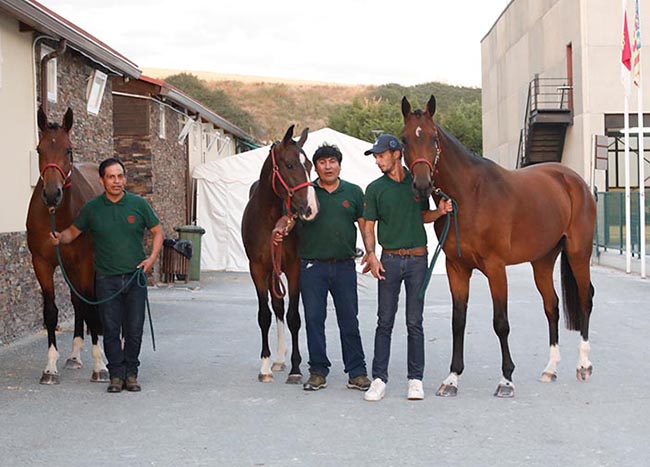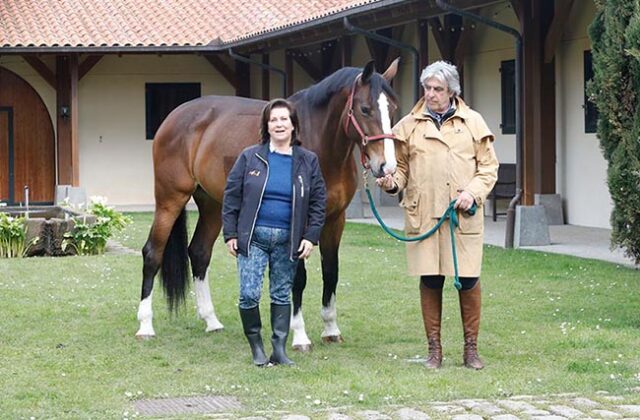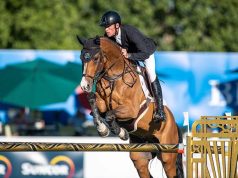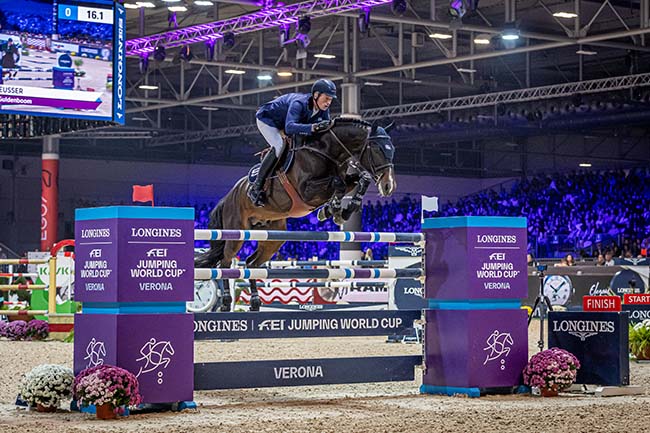By José Luiz FC
Photography: José Luiz FC
Two decades ago, in Gozón, in northern Spain, María Elvira Riva and Santiago Núñez, parents of Santiago Núñez Riva – a member the Spanish showjumping team – launched their project to breed and produce sport horses.
The farm includes around 40 hectares, of which 30 are pasture, while the reminder houses the stables, indoor and outdoor arenas, a horse walker, and woodland. It was here that the project became a reality that’s called Yeguada Casa’l Capellán which, in its 20-year history, has become a reference point in Spanish sport horse breeding.
María Elvira Riva, from a horse family herself, and Santiago Núñez Plaza, President of ANCADES (the Spanish Sport Horse Breeders Association) tell us how this project was founded and their objectives.
Q How did this project begin?
MER: Horses were my passion always. When I was sometimes told that breeding was the nicest thing on earth, I didn’t believe it as I always preferred jumping and showing. As time has passed I have come to change my view and think that, yes, breeding and rearing the horses is the best.
We bought the land in 2001. We already had two mares that I had shown and that had done 1m50, 1m60 with their previous riders: Sherezade (Ramiro) and Jolliness. Sherezade took part in several junior and young-rider European Championships and five-star CSIs with Gerardo Menéndez, and was a direct daughter of Ramiro. Jolliness (1986) was also part of the French teams for juniors and young riders, and also had very atractive origins, being a daughter of Lys de Darmen (out of Rina x Drost).
SN: I’d always had the idea of preparing our retirement in a project such as this one. Always related to horses and breeding.
Q What was the situation with sport horse breeding in Spain when you started?
MER: At that time there was little selection according to the origins. It was very amateur, not much professionalism. People that had a mare which they had shown used them when they retired. In most cases it was more sentimental rather than professional. They would use the nearest stallion as that was convenient. Now it is different, with all the new methods evolution races forward and breeders have started with selected mares wih good origins, but it still needs to be more professionally oriented, without forgetting the ‘feeling’.
SN: We have always gone along with the times. We started with two mares that had competed with María Elvira. They were bred to Colin d’Or (1986: Consul - Goldelfe x Goldstern) a stallion that had competed internationally with my brother-in-law, Juan Riva. The stallion was retired here at our farm, so it was very convenient. They produced some very reasonable products for that moment, but nothing compared to what is being born now. So we started with natural insemination, progressed to AI with frozen semen, then embryo transfer, and the next step is using OPU+ICSI which we started with AVANTEA, the reference laboratory, and now we also do in Spain with Javier González Fraga.

Q What is the biggest difference between the foals born at the beginning and the ones born in recent years?
MER: The biggest evolution has been in the quality. Frozen semen provides the opportunity to reach so many more stallions, and with the OPU+ICSI method you can use different stallions for the same mare, in the same year, so that opens a great array of possibilities which is reflected in the evolution of the horses bred now. I think they have more quality and more scope, that is power, jumping ability, and so on.
SN: Breeding has evolved very fast in the last few years. And, as I said before, we have always gone along with the times: No fear of new developments, and this has permitted us to have a rapid growth... To read the complete article you need to be a subscriber
CLICK HERE TO SUBSCRIBE TO BREEDING NEWS
SUBSCRIBERS CAN READ THE COMPLETE ARTICLE BY LOGGING IN AND RETURNING TO THIS PAGE




